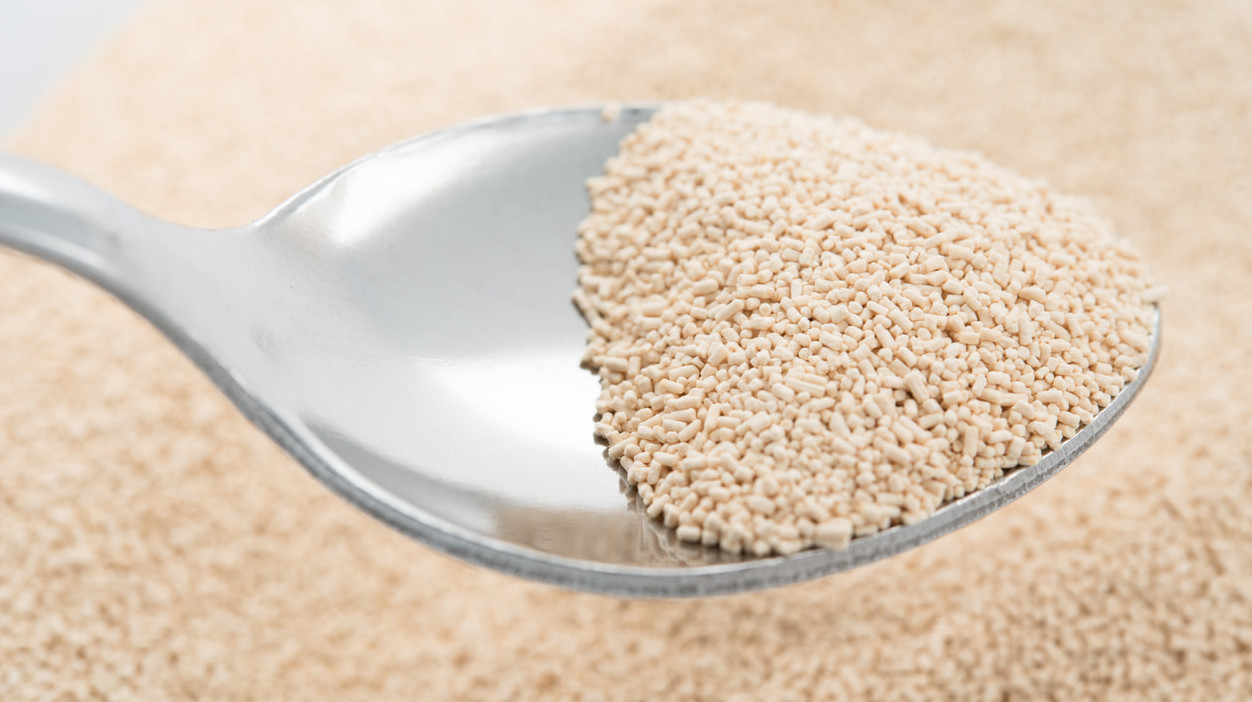What's The Difference Between Active Dry Yeast And Instant Yeast?
If you're going to try your hand at some of The Takeout's most comforting recipes, you'll need yeast. Some recipes, like sausage-stuffed gumbo bread and brown butter cinnamon rolls, use active dry yeast. Some, like cinnamon sugar-crusted Moravian cake, use instant yeast. If you'd like to quickly scroll through this article and be on your merry way, the quick answers to the questions you're asking are:
- Yes, there are differences between the two.
- No, one is not better than the other.
- Yes, there are reasons that recipes call for different yeasts.
- No, you can't simply swap active dry for instant, or vice versa.
- Yes, you can still forge ahead with your recipe, as long as you alter your approach.
If you'd like to understand the reasoning behind the answers so you'll never be that person having a panic attack over yeast in the baking aisle, here are the slightly less quick but easy to understand answers:
What are the major differences between the two?
Both active dry and instant start off as the same exact yeast, but are processed differently. Granules of active dry yeast are larger, so before you can use it, the yeast needs to spend a little time soaking in a liquid (like water or milk) to bring it out of suspended animation. Some brands of yeast suggest you add a tiny bit of sugar to the liquid, too, so the yeast has something to feed on when it wakes up. (Always be sure to check the package for manufacturer's directions.)
Instant yeast is ground into a finer texture, so there's no pre-soak needed—just throw it right into your dry ingredients and you're good. An easy way to remember the difference between the two: active dry needs to be activated; instant can be used in an instant.
Instant yeast is processed in a way to provide an indefinite shelf life, so there's a 99.999% chance that the yeast you're using—even if it's been in your freezer for years—will always be alive and raring to go. Active dry yeast lacks that sort of immortality. The only way to know if your yeast is ready for action, or if it's met its maker, is that all important pre-activation process: if the mixture gets foamy and bubbly, your yeast is alive! If it just looks like a murky, flat brown liquid, it's passed on and joined the choir invisible. Throw it away and try again with fresher yeast.
Why use one over the other?
When I owned a bakery we used SAF Instant Yeast for everything, because no one has time for dead yeast. Alas, it's not available in most supermarkets (though you can order it online), and I know that people are not always anticipating their yeast-related needs in advance. You work with what you got.
Many commonly available instant yeasts are "rapid rise" yeasts, which are slightly different than regular instant yeast: in addition to being milled finely, they contain added enzymes that cause the dough to rise rapidly (hence the name). Doughs made with rapid rise yeast do not require a second proofing, which works for things you'd like to eat rather quickly, like dinner rolls. There are certain doughs that require a cold proofing in the refrigerator—like bagels or the aforementioned cinnamon buns—where the point is to slow down the rising time to develop flavor and texture. Those can be made with instant yeast, but not rapid rise instant yeast. Ergo, when I write a recipe where a slower rise matters, I'll call for active dry. Otherwise, you can use whatever instant yeast you find in the supermarket.
How can one yeast be swapped for the other?
You can swap any yeast for another 1:1 with pretty decent results, but you'll need to make adjustments to your process. Active dry yeast rises a bit slower than instant yeast, and much slower than rapid rise instant yeast, so you need to pay attention to the size of the rise, ignoring the time indicated in the recipe. Visual cues are everything here.
As for how to make the substitutions:
If you need instant yeast, but have active dry: Check the back of the yeast package for instructions on how to activate the yeast.
If you need active dry but only have instant: Just go forward with your recipe without the yeast-activation time.
If you need active dry, but only have rapid rise instant: Throw the yeast in with the dry ingredients, and expect the recipe to work in double time. The finished results won't be perfect, but it's likely that they'll still be pretty tasty.
